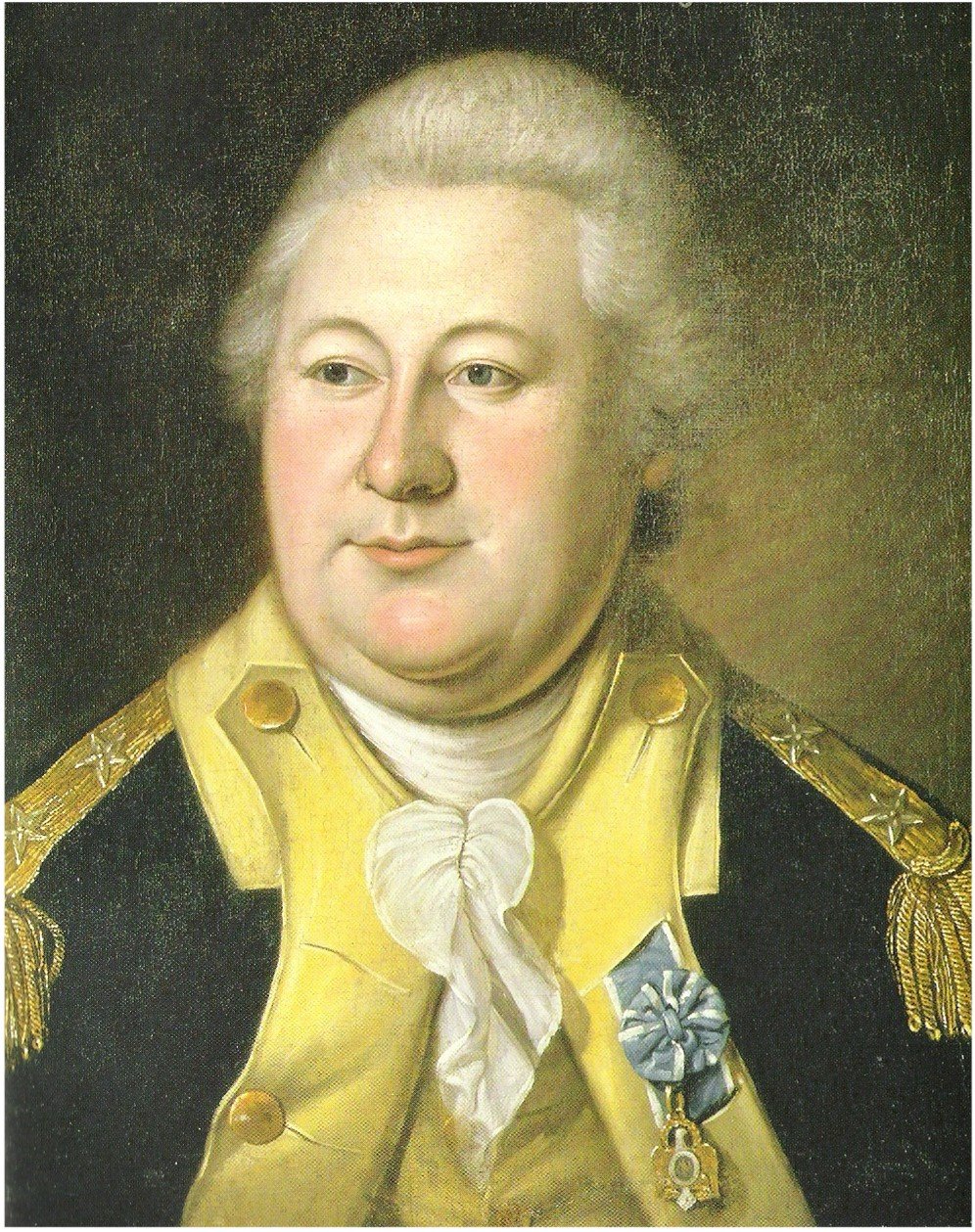|
Henry Knox was a major
force in the outcome of our nation's War for Independence and in the formation
of our government. He served as the head of the Artillery for the Continental
Army and as a trusted advisor to General George Washington. He is responsible
for the transportation of 59 cannon from Ft. Ticonderoga to Dorchester
Heights, a feat that forced the British to evacuate the city of Boston.
In addition, he changed the use of artillery from siege weapons to an assertive
forward position, a decisive factor in winning the war.
While serving as Secretary of War in President Washington's first cabinet,
Henry Knox commissioned the first six frigates, including the USS Constitution
(Old Ironsides), which became the foundation of the United States Navy.
His ideas for military training were the basis on which the military academies
of West Point and, much later, Annapolis were created. He also had written
the rules for training of civilians which were finally put into practice
more than a century after his death with the establishment of the National
Guard.
Henry Knox was born in Boston in 1750. His formal education came
to an abrupt end when he was nine years old and from then on he diligently
studied and educated himself while earning a living to help support his
mother and younger brother after the loss of his father. His favorite subjects
to study were the ethics of the ancient Greeks and Romans, history, military
tactics and the French language. He worked as an apprentice in a Boston
bookstore, opening his own at the age of 21.
Lucy Flucker, daughter of the Royal Secretary of the Massachusetts
Bay Colony, became his wife on June 16, 1774. The couple had thirteen children,
of whom only three survived to adulthood. At the age of forty-five, Henry
Knox retired from government service and built his home in Thomaston, Maine,
where he became active as an entrepreneur. He built boats, burned lime,
raised cattle, sheep and goats, cross-pollinated plants to make them winter
hardy for the long Maine winters, built roads and locks along the rivers
to increase shipping to interior towns and helped industrious newcomers
to the area by investing in their businesses.
Just as his investments began to show a profit, Henry Knox tragically
died at the age of fifty-six. His magnificent home eventually fell into
a state of disrepair and was torn down in 1871 to make room for the Lincoln-Knox
Railroad tracks. The building was eventually rebuilt from the original
plans but on a different site and is now a handsome museum at the
intersection of U.S. Route 1 and Route 131 South in Thomaston.
The Thomaston Historical Society is housed in the only remaining building
from the original estate, built in 1794, a brick farm house that, from 1872
until 1956, served as the town's railroad station.
|


![]()